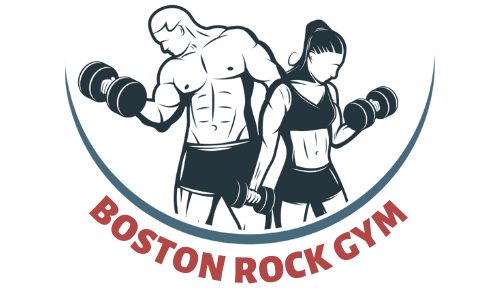In the world of sports, where inches and milliseconds can separate champions from the rest, the pursuit of peak performance is relentless. Athletes push their bodies to the limits, seeking every possible advantage to gain that competitive edge.
One of the most critical components of their journey to greatness is recovery—the ability to bounce back from intense physical exertion and be ready to perform at their best again.
Traditionally, athletes have relied on a gamut of recovery methods, from ice baths that numb the body’s aches to therapeutic massages that knead away tension. While these techniques have their merits, there’s a new player in the field of athlete recovery, and it’s changing the game in ways that were once unimaginable. The secret ingredient? Cannabis.
Contents
The Pursuit of Peak Performance
Before we delve into the role of cannabis in athlete recovery, it’s essential to understand the relentless drive that fuels top athletes. Whether it’s sprinting down the track, scoring goals on the soccer field, or enduring the grueling stages of a cycling race, these athletes are in a constant battle against their own limits.
They strive not only to win but to perform at their absolute peak, often pushing their bodies to the brink of exhaustion.
Achieving peak performance requires a delicate balance between intense training and adequate recovery. Recovery is where the body heals, repairs, and adapts to the stress placed upon it during training.
It’s a time when muscles rebuild, inflammation subsides, and energy stores replenish. Without proper recovery, athletes risk burnout, injuries, and suboptimal performance.
Traditional Recovery Methods
Traditionally, athletes have relied on a toolkit of recovery methods to support their journey towards peak performance. Ice baths, for example, are favored for their ability to reduce inflammation and soothe sore muscles. The cold immersion triggers vasoconstriction, which can alleviate muscle soreness and swelling. Therapeutic massages, another staple of athlete recovery, work to release muscle tension and improve blood circulation, promoting faster healing.
Yet, these traditional methods have their limitations. Ice baths can be uncomfortable, and their effectiveness varies from person to person. Massages, while beneficial, can be time-consuming and expensive. As athletes continue to seek innovative ways to recover efficiently and effectively, a new ally has emerged—cannabis.
Cannabis: A New Player in Recovery
Cannabis, once shrouded in controversy, is stepping into the limelight as a game-changing ingredient in athlete recovery. The shifting perception of cannabis, both in the realm of sports and society at large, has paved the way for its exploration as a recovery aid.
Athletes are increasingly turning to cannabis for its potential benefits, including pain management, reduced inflammation, and enhanced sleep quality.
But it’s not a free pass to recreational use. Athletes and medical professionals are approaching cannabis with caution, seeking a responsible and measured approach that harnesses its therapeutic properties while respecting regulatory boundaries.
Microdosing: The Key to Cannabis for Athletes
At the heart of cannabis’s role in athlete recovery lies a concept known as microdosing. Unlike traditional cannabis use, which often involves getting “high,” micro-dosing is a subtler approach. It’s about consuming minimal amounts of cannabis to harness its potential benefits without the cognitive impairment associated with higher doses.
Microdosing holds promise for athletes seeking relief from pain and inflammation. It allows them to manage discomfort and muscle soreness without compromising their mental clarity. By carefully titrating their cannabis intake, athletes can fine-tune their recovery experience and tailor it to their unique needs.
So, what are these potential benefits that athletes are chasing with microdosing? How does it impact their performance and recovery? To learn more, check out this microdosing guide from Zamnesia.
Success Stories: Athletes Who Embrace Cannabis
The real test of any innovation is in the stories of those who have embraced it. In the world of sports, several professional athletes have openly discussed their use of cannabis for recovery. Their experiences provide a compelling narrative of the potential benefits and challenges associated with cannabis use.
Consider the story of Riley Cote, a former professional ice hockey player who turned to cannabis after his retirement to manage the pain and inflammation from years of physical contact on the ice. Or think about Megan Rapinoe, a celebrated soccer star who advocates for cannabis as a tool for pain relief and recovery.
These athletes, among others, have shared their journeys of incorporating cannabis into their recovery regimens, shedding light on the profound impact it has had on their physical well-being and overall quality of life.
Cannabis and Sports Regulations
Despite the growing interest in cannabis as a recovery aid, navigating the complex web of sports regulations remains a challenge for athletes. Cannabis is still prohibited in many competitive sports, leading to potential consequences for those who test positive.
Athletes must carefully weigh the potential benefits against the risks associated with cannabis use, considering their individual circumstances and the rules of their respective sports.
Beyond Cannabis
While cannabis has emerged as a potent tool in athlete recovery, it’s essential to remember that it’s not a panacea. Recovery is a multifaceted process that extends beyond any single ingredient. Athletes must adopt a holistic approach that encompasses nutrition, sleep, mental well-being, and a careful consideration of their training load.
Nutrition plays a pivotal role in recovery, providing the building blocks for muscle repair and energy replenishment. Sleep, often underrated, is when the body performs its most profound recovery work. Mental well-being, too, is critical, as stress and anxiety can impede recovery and performance.
In the pursuit of peak performance, athletes must strike a delicate balance between pushing their limits and allowing themselves the time and resources for proper recovery. Cannabis, when used responsibly and in accordance with regulations, can be a valuable addition to the athlete’s toolkit, offering a path to enhanced well-being and performance.
As you consider the role of cannabis in athlete recovery, ask yourself: What potential benefits could this innovative approach bring to athletes striving for excellence?
How can we balance the pursuit of peak performance with responsible and regulated cannabis use? In the dynamic world of sports, the answers are evolving, but the conversation is undoubtedly gaining momentum.
Conclusion
The journey of athletes seeking peak performance is a testament to the human spirit’s capacity for resilience and growth. In this quest, recovery is the linchpin that allows them to continually push the boundaries of what’s possible. As cannabis emerges as a potential game-changer in athlete recovery, it ushers in a new era of exploration and discovery.
The secret ingredient that today’s top athletes are exploring is cannabis—a plant once relegated to the shadows but now emerging as a tool to enhance performance and well-being. Yet, as athletes navigate this uncharted territory, they do so with caution, respect for regulations, and a commitment to responsible use.
In the world of sports, where seconds matter and victories are decided by fractions of an inch, every advantage counts. Athletes are always looking for that extra edge that will set them apart. With cannabis, they may have found a key to unlocking their full potential, ushering in a new era of performance and recovery.
Are you ready to embrace the changing landscape of athlete recovery? How do you envision the future of cannabis in sports? In this ever-evolving journey towards peak performance, one thing is clear: the game has changed, and the rules are still being written.




